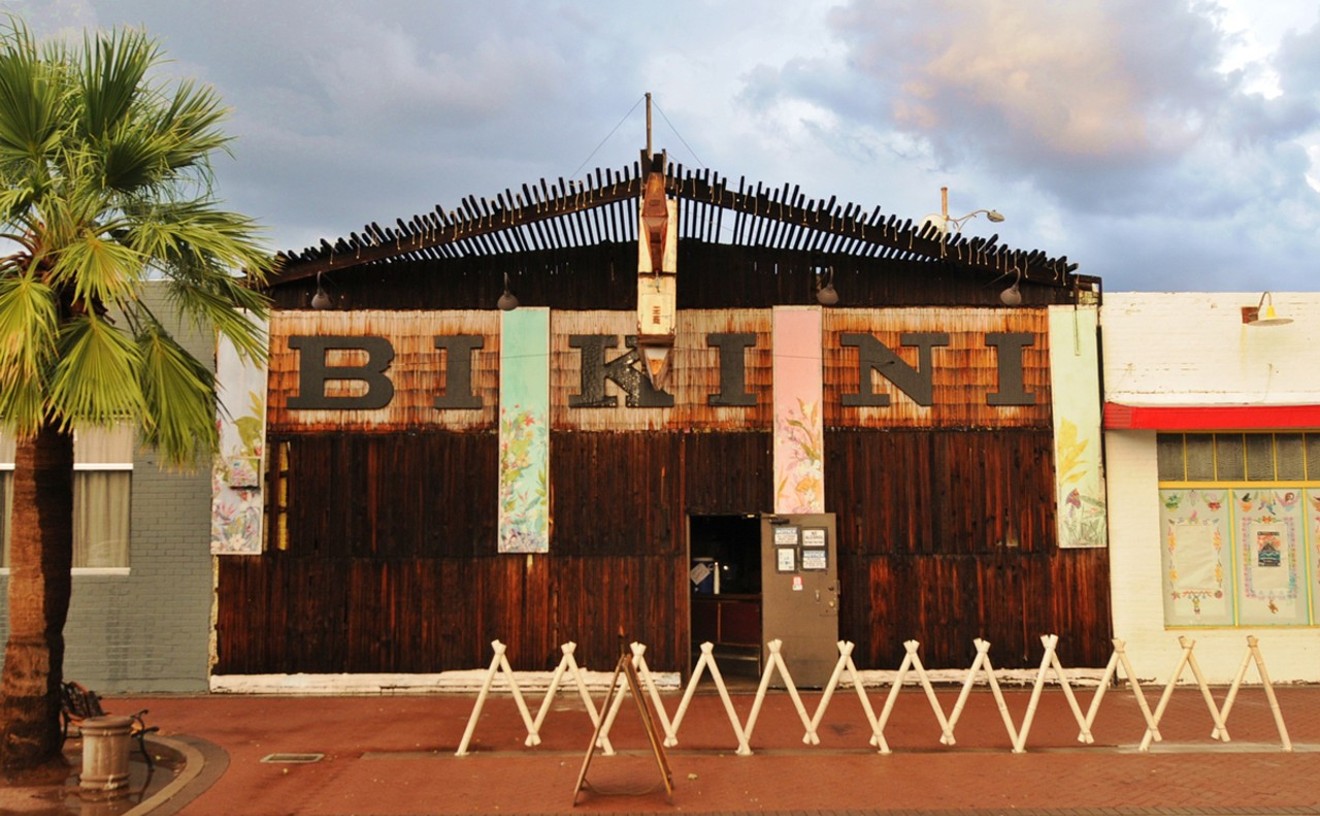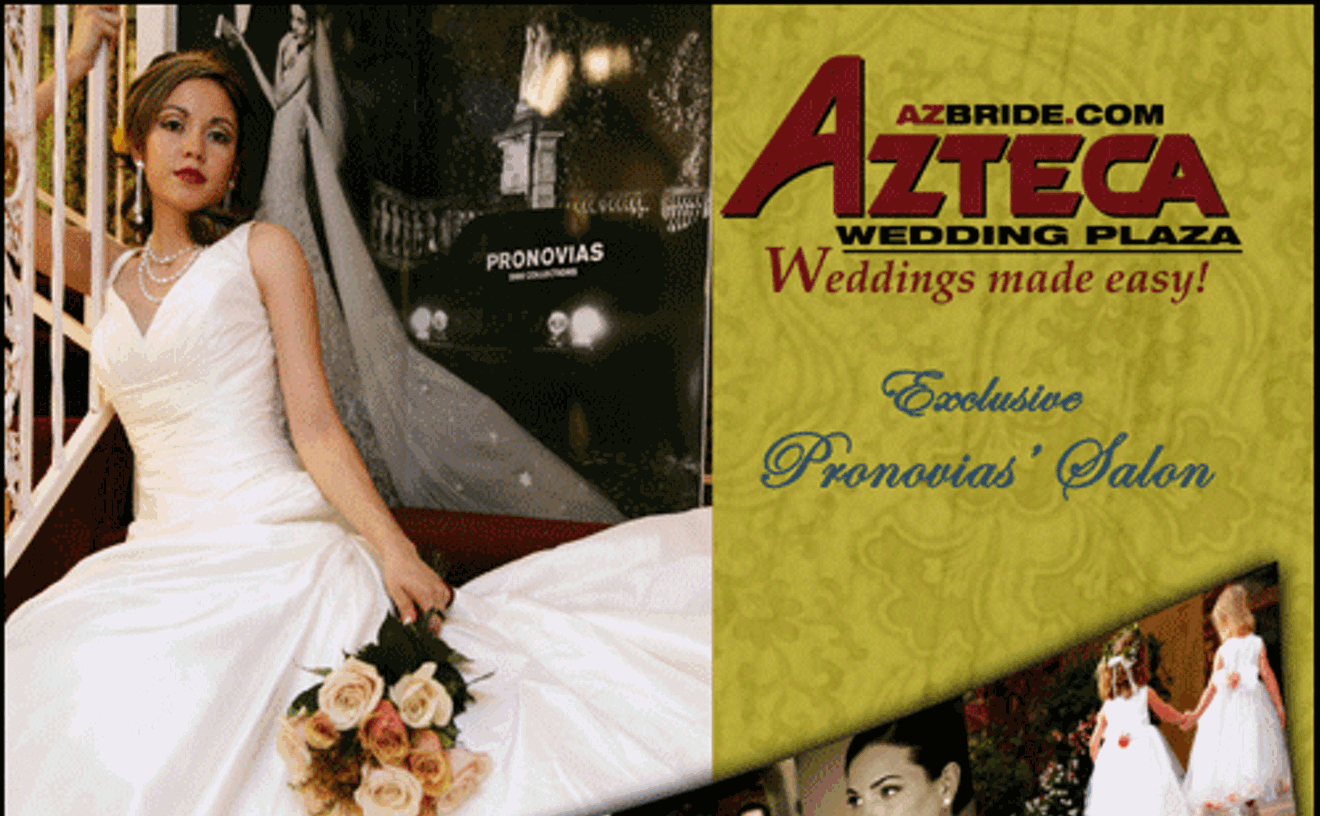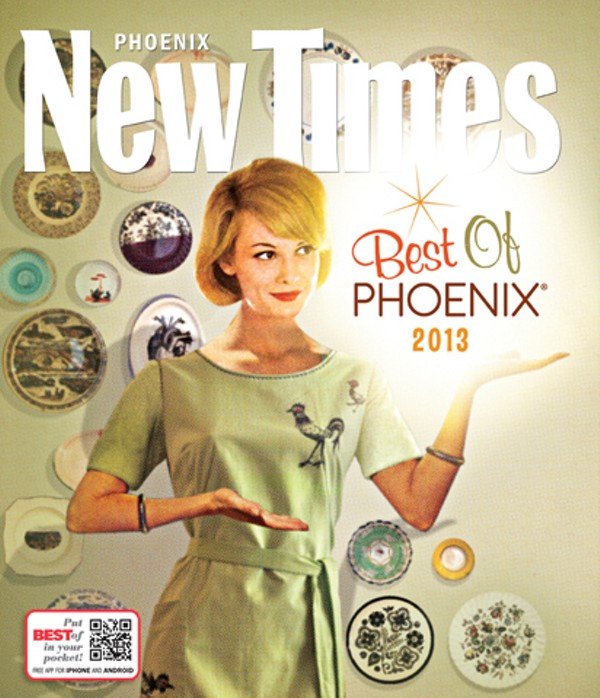As with so many old-time local hotspots, the sign remains though the business is kaput. But the Mr. Lucky's sign is more than just a gaudy gravestone for a once-flourishing nightclub; it's the main attraction in a clutch of the coolest vintage signs in the city. Along Grand Avenue, between Roosevelt and 57th Drive, you'll find the rusted-out Smith Radiator Exchange marquee; the brightly Modernist sign for the City Center Motel; the fast-fading marker for the Crystal Motel; and the Mel's Diner sign, made famous in the film Alice Doesn't Live Here Anymore (and the subsequent TV show, Alice).
But it's the Mr. Lucky's sign that's legendary. And what a sign. A demented court jester leers knowingly at the traffic speeding by, his three-pointed hat decked with dangly red pom-pons. The light-up "Dancing" and "Cocktails" placards have been replaced with signs promising "Musica" and "En Vivo," remnants of Mr. Lucky's last incarnation as a Mexican mariachi club. Neon aficionados far and wide remain concerned about the future of this gorgeous landmark (at 3660 Grand Avenue) — proof of its prominence and real beauty.
Once our town's hottest saloon, the former hotspot began as a smartly appointed casino in 1966. Shortly after, public gambling became verboten here, and owner Bob Sikora turned his casino into a honky-tonk, with country music headliners performing most nights upstairs and live rock bands in the club's cavernous basement.
The house band, The Rogues (fronted by J. David Sloan, a former member of Willie Nelson's touring band and now a local celeb in his own right) occasionally fronted visiting dignitaries, who included Waylon Jennings, Marty Robbins, Glen Campbell, and Charley Pride.
Today, Mr. Lucky's amateur hour contests and Friday night fish fry are mere memories; the club closed in 2004 (although it's reportedly available to rent for party events), leaving behind a big, gorgeous reminder: the towering neon sign out front, surrounded by chain link, its bulbs as dead as the club it once announced.









